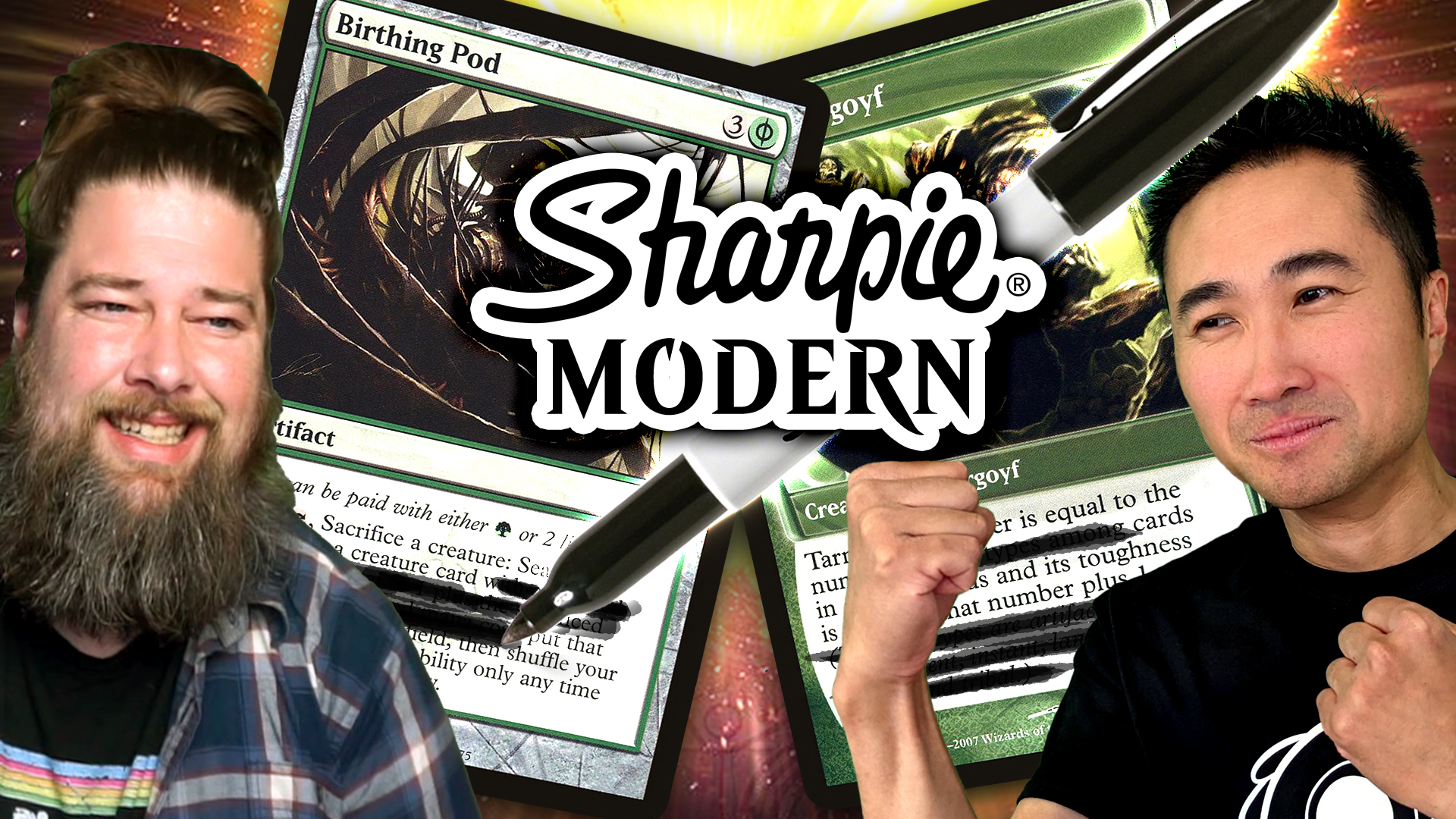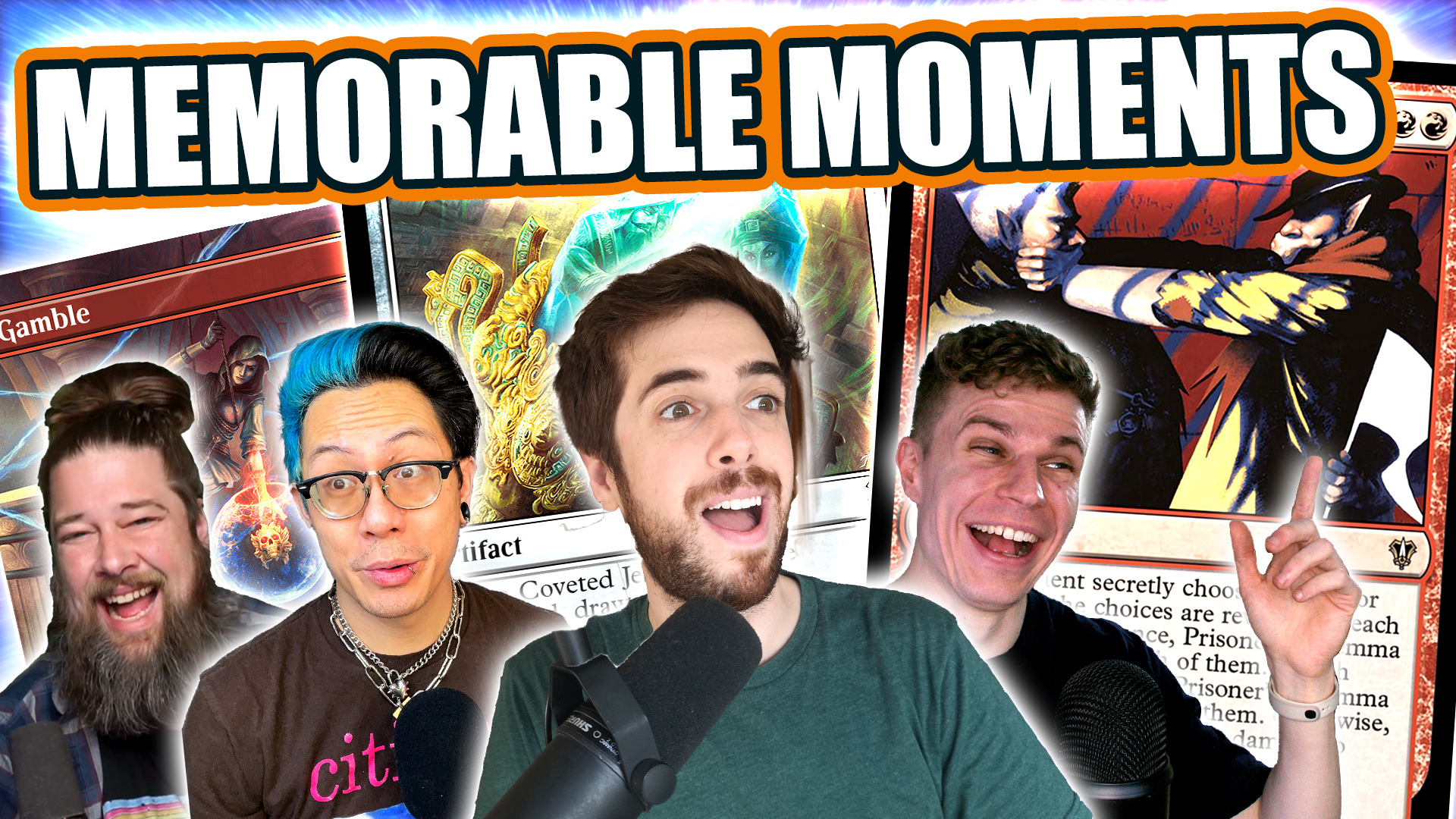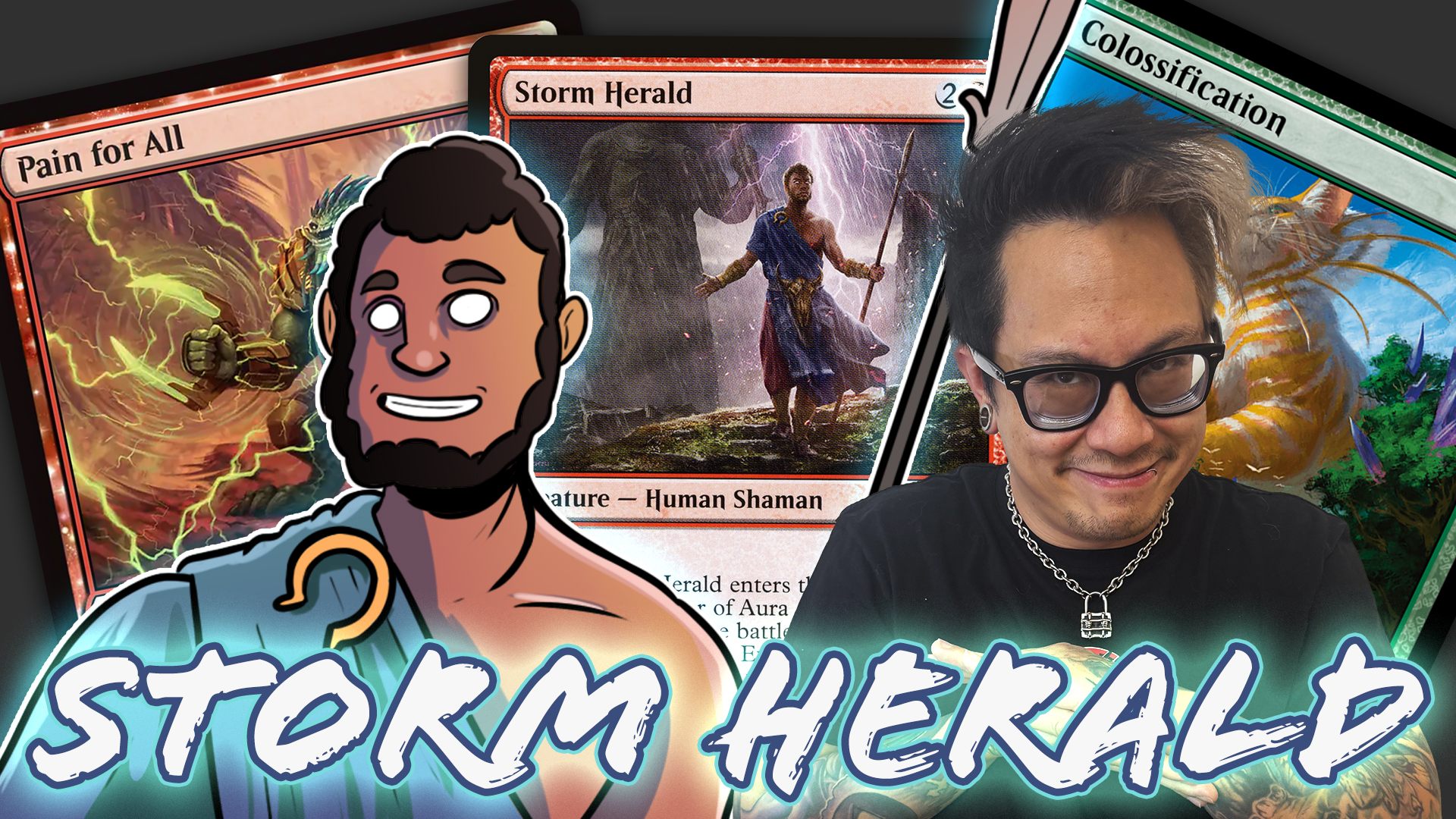Understanding Buyouts and Price Spikes
Magic cards are changing in price all the time, and at least a handful of cards "spike" in price (see a very large and fast price increase) just about every week. While Reserved List cards are especially likely to be bought out (which is the most common cause of a price spike) thanks to their low supply and the Reserved List itself—which offers a wall of protection around speculators, who don't have to worry about a surprise reprint ruining their investment—older, low-supply Modern, and Commander cards deal with the same issue, just on a smaller scale.

The reason why cards spike isn't all that important to today's article, since our focus is on understanding how price spikes actually work and what they really mean, but typically there are two primary reasons why cards get bought out and spike in price. First, a card suddenly becomes more popular, and lots and lots of players start picking up a copy or playset (perhaps combined with some number of "speculators" who buy cards in the hopes of making a profit), and (especially if it's an older card without a lot of supply to begin with) the end result is that all or most of the copies of the card are purchased from various Internet vendors and sites. As people start to relist new copies of the card for sale, they do so at a higher price representative of this new demand. Second, there are cases (especially with Reserved List cards) where one person or a small group of people intentionally buy as many copies of a card as possible with the express goal of increasing its price to be able to make a profit.
This being said, for our purposes today, it doesn't really matter too much how a card was bought out or why it spiked in price because whether it's players or speculators, finance-driven or play-driven, the underlying mechanics of a buyout and price spike are more or less the same. Let's start with an ironic price chart I posted on Twitter a couple of days ago:

Here, we have the Legends printing of the aptly named Greed, which more than doubled in price a couple of days ago (and, compared to a couple of months ago when Greed was around $30, increased about 1,000%). So, how does a random old card (with a bunch of reprintings that are worth $1 or so) end up spiking to $300? To understand this, we need to to talk about how the price charts on Goldfish (and most other finance sites) actually work.
The price charts you see here on Goldfish use TCG-Mid pricing. If you somehow aren't familiar with TCGplayer, it is the biggest card market in North America, and rather than selling cards itself, it allows players and stores to sell cards through its marketplace in exchange for a small percentage of their profits (similar to eBay but focused on CCGs / TCGs and without auctions). Just like it sounds, TCG-Mid is the median price of all the copies of a specific card listed for sale on the site. Normally, this system works pretty well because if you look at random Standard or Modern cards, there are generally hundreds of listings on TCGplayer, giving us a large and meaningful sample size and a pretty stable representation of a card's price. Unfortunately, things can get a bit weird when it comes to cards with low supply and buyouts.



So, back to how Greed ended up $300. Let's say there were 10 copies of Greed listed for sale on TCGplayer at between $40 and $60 (made up numbers, but having 10 or fewer near mint copies for sale isn't uncommon for very old cards). TCG-Mid price would likely be about $50. Now, let's say a person (or group of players—again, it doesn't really matter to our example) purchased all of the copies of Greed listed on TCGplayer. Maybe they wanted the biggest Legends Greed collection in the world, or 10 random players decided to upgrade their Commander decks to the original printing of Greed, or a speculator, driven by literal greed, decided to buy all of the copies of Greed to attempt to jack up the price and make a profit.
Now, let's say there is a single copy of Legends Greed on TCGplayer listed for $300 by someone who didn't especially want to sell the card (or is hoping someone is ignorant enough to buy it for way more than its market price). If all of the $40–60 copies of Greed get bought out, the median price of Greed is suddenly represented by that one $300 copy that nobody expected would sell at that price to begin with. The price chart shoots up to $300, and everyone is talking about the buyout.
It's also worth mentioning here that this mechanism—with one overpriced copy of a card becoming the "price" of a card, if it's the only copy on the TCGplayer market—is how some people manipulate the market. They simply buy all of the $50 copies of Greed until there are none left for sale and then immediately list one of the copies for sale at $300, effectively (at least, in the perception of a lot of players) increasing the price of the card x6. Of course, this doesn't mean that Greed is actually worth $300, because TCG-Mid is the price a seller is asking for the card. The number can be pretty deceiving if nobody is willing to actually hand over $300 for a Legends version of Greed. In fact, let's check back in on Greed now, a few days after the buyout and price spike.
As you can see, Greed is roughly back down to where it was before, with the TCG-Mid price sitting at about $62. So how, in the course of a handful of days, can a card go from $50 to $300 and back to $60? It's simple, really: after Greed was bought out, people started relisting copies on TCGplayer, but not for $300, because nobody expects to sell their copies for that price. Instead, maybe the first person listed for $150, and then $100 after that didn't work, and then $90, $80, and $70 until eventually the people dropped their price to such an extent that the median price went back down to about $60.

If you take one lesson from today's article, it should be that the peak spike price of a card is almost never its true market value. When a card gets bought out, sellers have an incentive to list their copies for as high as possible. If they happen to sell, great; if they don't, sellers can always drop the price until they start selling. So, when you see a random card go from $2 to $20 or from $50 to $300, your natural reaction should be to think that the post-spike price probably isn't real (here, it's worth mentioning that this is specifically with regard to buyouts—when you see a Standard staple increasing 20% or 50% each week for several weeks, that price is likely legitimate). Instead, plan on waiting a few days for the process we've been talking about—of sellers undercutting each other to try to sell copies of their cards—to take place, and you'll get a much better sense of the actual market value of the card.
On the other hand, when a card gets bought out, it's actually rare that it returns all the way to its pre-buyout price. In this case, Greed is a bad example, since it's essentially the same value today as before the price spike, but most of the time, when a $5 card gets bought out and spikes to $20, the value sticks at something like $10 after everything plays out. A good recent example of this is Mox Diamond:
As you can see, Mox Diamond went through the exact same process that we've been talking about. It started at about $180, jumped to over $500, and is currently about $280. The peak spike price of more than $500 wasn't the true market value of the card because nobody was willing to hand over $500 of their hard-earned money for a copy of the zero-mana artifact. In fact, $500 wasn't even close to the true market value. On the other hand, Mox Diamond is still $100 more today than it was before the buyouts and price spike. While not being $400 more expensive is a good thing, the fact that players who need a copy (or four) of Mox Diamond still have to pay significantly more than they would have pre-buyout is still a bad thing for players.
Secondary Metrics

Thankfully, there are also some other prices and data to look that can help further explain card prices and price spikes. Above is part of the price chart of Lyra Dawnbringer (a card that recently doubled in price based on it being underrated during spoiler season and on seeing heavy play in Standard). While TCG-Mid is still driving the price chart itself, there are a bunch of other numbers and metrics to be aware of. While just waiting a week or so is an easy way to see if a price spike is real, using some of these extra prices and numbers can help speed up the process.
First, one easy way to get a rough sense of whether a price spike is real or not is to look at the TCG Market price and the buylist value (and related spread) of a card. TCG Market price is designed to be the "completed listing" of the TCGplayer market, showing how much cards have actually sold for (not how much sellers are asking). While using it as a primary price is problematic, since we don't really know how it is calculated (and the lack of transparency opens up the possibility of manipulation), it's a great way to sort of double-check the TCG-Mid price. If the Market price and Mid price are relatively close, it means that players are buying copies for the current asking price and that the TCG-Mid price is a realistic and meaningful representation of a card's true market value. On the other hand, when Greed spiked to $300, the TCG Market price was still around $40, which (at least, in theory) means that nobody was actually buying copies for $300 (or even $100), making the price spike—for lack of a better word—a "fake" price movement.
Buylist prices and the spread are another good way of double checking prices. Much like the TCG Market price, buylist prices represent the floor of a card's value (because anyone with a copy of the card can send it away to a big vendor and get the buylist price immediately). Generally, a spread of around 50% is fairly normal for low- and medium-demand cards, while high-demand staples that vendors can easily sell lots and lots of copies of often have spreads in the 20–30% range. On the other hand, when you see a spread that's 80% or 90% (for rares and mythics; junk commons and uncommons are strange when it comes to spreads), this often means that the retail (asking) price of a card has recently increased a lot but vendors don't think the post-spike price is real because they aren't willing to pay any more for copies of the card.
Finally, using ChannelFireball and Card Kingdom prices as a way to double-check TCG prices can work, although this comes with a word of warning. Let's say that when Greed is bought out, not only are all of the copies on TCGplayer purchased, but so are all of the copies on ChannelFireball and Card Kingdom as well (which isn't all that uncommon, especially for old, low-supply cards that don't have much supply on the market to begin with). While TCGplayer prices update quickly because so many players and vendors are selling cards on the site (which means someone likely has a copy to list), ChannelFireball and Card Kingdom don't typically update their prices while a card is out of stock. This means that until someone walks into their store (or mails in a copy through their buylist), giving ChannelFireball or Card Kingdom a copy of Greed to sell, their list price will represent the old pre-buyout pre-spike price, which likely isn't real either. Rather than inflating the value of the card like TCG-Mid, these metrics often make the card look cheaper than it will be once it is relisted. (This is another reason why looking at buylist prices is so valuable. If you see the buylist price rise significantly, it means the vendor is aggressively trying to buy copies of the card to relist, likely at a new, higher price point.)
Wrap-Up

All in all, there are a few important things to keep in mind when it comes to buyouts and price spikes. First, the peak spike price is almost never the true price of a card. When you see Greed at $300, your first instinct should be to think, "That price isn't real." Then, you can turn to the secondary metrics (or just wait a few days) before making any solid conclusions. As a result, it's almost never a good idea to buy at a peak spike price or even a bit below.
Second, even though buyouts aren't as bad as they look at first glance, they are still bad. When a card goes from $50 to $300 and end up $100 after a week, even though the card didn't increase $250, it did increase $50, which is still a ton of money for players looking to build decks and play the game. The good news is that these types of price spikes mostly impact Reserved List cards (along with some older, low-supply non-Reserved List cards that suddenly become important to Commander), so while buyouts make the game more expensive, this is relatively narrow in who it impacts.
Third, from a meta perspective, we don't have a perfect way for keeping track of the price of Magic cards. Every single method we currently have has issues, with TCG-Mid being easy to manipulate and prone to spikes, TCG Market lacking transparency, and the prices of individual vendors (like StarCityGames, ChannelFireball, and Card Kingdom) being problematic due to a lack of supply. As such, it's important to keep in mind the strengths and weaknesses of various pricing systems when it comes to figuring out the true price of cards. Perhaps someday we'll have a better system, but for now, we have to make due with the available options.
Last but not least, it's important to remember that Magic is a game. While seeing buyouts and price spikes drives me (and I'm sure many of you) crazy, if we get too focused on the shady underbelly of buyouts and market manipulation, it's easy to forget to have fun playing Magic. With this in mind, I've essentially given up on the Reserved List. While I'm still hopeful that Wizards will do the right thing and change course eventually, it's almost not worth keeping track of Reserved List prices at this point. Just assume that everything on the list will be bought out and off-limits to nearly all Magic players. While it's frustrating to write off some of the sweetest cards in Magic as a complete and total loss, you'll be much happier focusing on the cards you can play than on the cards that the combination of Wizards' refusal to budge on reprints and speculators looking to drive up prices for personal gain have put off-limits for the majority of Magic players.
Conclusion
Anyway, that's all for today. Buyouts and price spikes are accelerating, especially for Reserved List cards, so hopefully understanding the anatomy of a price spike will be helpful moving forward. Don't get caught in the hype and buy cards as they are spiking. It's the absolute worst thing you can do. Either think ahead and get the cards you need early, before they spike, or plan on waiting a week or two for the card's price to normalize as sellers race toward the bottom.
As always, leave your thoughts, ideas, opinions, and suggestions in the comments, and you can reach me on Twitter @SaffronOlive or at SaffronOlive@MTGGoldfish.com.













